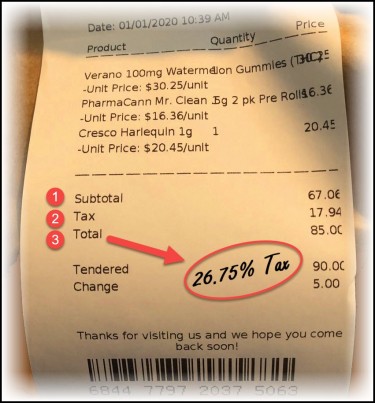Cannabis News
What the American Cancer Society Gets Wrong about Cannabis and Public Consumption Spaces
Published
3 months agoon
By
admin
ACS smoking in public spaces.

What the American Cancer Society gets wrong about cannabis
Grab your favorite strain and settle in, because we’ve got some nonsense to unpack.
California, ever the trailblazer in cannabis policy, is on the verge of bringing Amsterdam-style coffee shops to the Golden State. Assembly Bill 1775, which recently passed through the legislature, would allow for public cannabis consumption spaces where you can spark up, grab a bite, and maybe even catch a live show. It’s the kind of progressive policy that makes prohibitionists clutch their pearls and cannabis enthusiasts dream of a greener future.
But hold your horses, because the American Cancer Society (ACS) is throwing a fit. They’re urging Governor Gavin Newsom to veto the bill, claiming it would “roll back decades of hard-won protections of everyone’s right to breathe clean, smoke-free air.” Now, I don’t know about you, but equating cannabis smoke with tobacco smoke is like comparing a gentle spring breeze to a Category 5 hurricane.
The ACS is making some wild associations between tobacco and cannabis, seemingly forgetting that these are two very different plants with very different effects on human health. They’re leaning on outdated rhetoric and fear-mongering tactics that belong in the “Reefer Madness” era, not in our current age of cannabis enlightenment.
In this article, we’re going to pick apart the ACS’s misguided stance on cannabis and public consumption spaces. We’ll explore why their concerns are overblown, examine the actual science behind cannabis smoke, and make a case for why public and private consumption clubs are not just a good thing, but a necessary step in normalizing cannabis use.
So, let’s light up this discussion and clear the air of misconceptions. It’s high time we address what the American Cancer Society gets wrong about cannabis and why their stance is more harmful than helpful in the grand scheme of public health and social progress.
It seems the American Cancer Society (ACS) is having a bit of a reefer madness moment. According to Marijuana Moment, they’re urging Governor Newsom to veto the bill that would allow cannabis cafes in California. Their reasoning? They claim it would violate the state’s precious “no smoking laws” in public places.
Now, let’s get one thing straight. These laws were initially put in place to combat the very real and deadly effects of tobacco smoke. But here’s where the ACS takes a wrong turn down Prohibition Lane – they’re equating cannabis smoke with tobacco smoke as if they’re two peas in a cancerous pod. Spoiler alert: they’re not.
Let’s break it down, shall we? Your average commercial cigarette is a veritable cocktail of death, containing over 7,000 chemicals, many of which are known carcinogens. We’re talking arsenic, benzene, and even radioactive elements like polonium-210, thanks to the pesticides used in tobacco cultivation. It’s like smoking a mini toxic waste dump.
Cannabis, on the other hand? It’s a whole different ballgame. While any smoke can contain potential carcinogens, cannabis has a secret weapon up its sleeve. Studies have shown that THC and other cannabinoids can actually induce apoptosis – that’s science-speak for making cancer cells commit suicide. In fact, when we look at cancer rates among cannabis users versus non-users, there’s no significant difference. If anything, some studies suggest cannabis users might have a lower risk of certain cancers.
But let’s not stop there. We’ve got a rich history of anecdotal evidence pointing to cannabis as a potential cancer fighter. Ever heard of Rick Simpson Oil? Countless people have used this concentrated cannabis extract to treat their tumors, with many reporting they’re now cancer-free. Now, I’m not saying cannabis is a miracle cure – we need more research – but it’s certainly not the cancer-causing boogeyman the ACS is making it out to be.
Here’s another kicker – while smoke does indeed contain carcinogens, cannabis has a unique way of interacting with our bodies. It actually turns off certain receptors that would otherwise allow these carcinogens to bind to our cells. It’s like cannabis is bouncing the bad guys at the door of Club Cell.
So, when the ACS tries to equate tobacco with cannabis, they’re not just comparing apples and oranges – they’re comparing a hand grenade to a healing herb. Sure, the “no smoking” laws might technically be affected by allowing cannabis cafes, but this isn’t going to undo decades of progress in reducing tobacco-related cancers.
The ACS needs to wake up and smell the cannabis. Their stance isn’t just misguided – it’s potentially harmful. By lumping cannabis in with tobacco, they’re perpetuating outdated stereotypes and blocking progress that could lead to more research and potentially life-saving treatments.
In the end, the ACS’s argument against cannabis cafes is about as solid as a house of cards in a hurricane. It’s high time they updated their stance based on actual evidence rather than outdated propaganda. After all, isn’t that what a science-based organization should
First off, let’s face it – cannabis is a social drug. It’s meant to be shared, passed around, and enjoyed with good company. There’s something magical about sparking up a joint and sharing stories, laughs, and maybe a few profound realizations with your buddies. Now, imagine being able to do that in a cozy cafe, or while watching your favorite band perform live. It’s like combining the best parts of Amsterdam’s coffee shops with the laid-back vibe of a California beach party.
For far too long, we cannabis enthusiasts have been relegated to basements, back porches, and other hidden spots to enjoy our herb. It’s like we’re second-class citizens, forced to hide our perfectly legal (in many states) activity as if it’s something shameful. Well, I say it’s high time we step out of the shadows and into the light of day – or the soft glow of a chill cannabis lounge.
These cannabis-friendly establishments would be a game-changer. Imagine walking into a place where the air is sweet with the scent of quality bud, where you can order a THC-infused mocktail and some cannabis-cuisine, all while vibing to some great tunes. And the best part? Everyone around you is on the same wavelength. No judgmental looks, no nervousness about the smell – just pure, unadulterated cannabis camaraderie.
Now, I know what some of you might be thinking – “But Reggie, what about mixing with alcohol?” Well, I’m glad you asked. These cannabis clubs would be alcohol-free zones. And that’s a good thing, because mixing booze and bud is about as smart as trying to light a joint in a wind tunnel. These spaces would be dedicated to cannabis and cannabis alone, creating a safer, more controlled environment for everyone to enjoy their high.
But here’s the real kicker – this isn’t just about having a good time (although that’s a pretty sweet bonus). This is about freedom. It’s about normalizing cannabis use and giving an entire culture the respect and recognition it deserves. For too long, we’ve been shackled by outdated policies and reefer madness mentalities. It’s time to break free from those chains and create spaces where we can freely and openly enjoy our herb of choice.
California, bless its progressive heart, is taking a bold step in the right direction with this bill. They’re recognizing that cannabis users aren’t just a fringe group to be tolerated, but a significant portion of the population that deserves accommodation. They’re saying, “Hey, cannabis is legal, so let’s treat it like any other legal substance and create appropriate spaces for its use.”
So, here’s to hoping that cannabis clubs become a reality not just in California, but across the nation. It’s time we embrace this new normal, step out of the basement, and into a brighter, greener future. After all, life’s too short to spend it hiding your joint behind a dumpster. Let’s light up, socialize, and show the world that cannabis culture is here to stay – and it’s pretty damn awesome.
The American Cancer Society, bless their misguided hearts, is urging Governor Newsom to veto a bill that would bring cannabis cafes to California. They’re worried it’ll undo decades of progress in creating smoke-free environments, as if a few cannabis lounges will suddenly transport us back to the days of Mad Men-style chain-smoking.
But here’s the rub: the ACS is puffing on some seriously flawed logic. They’re treating cannabis like it’s tobacco’s evil twin when in reality, it’s more like tobacco’s chill, health-conscious cousin. Cannabis doesn’t carry the same risks as tobacco, and in many cases, it might even help fight cancer rather than cause it. By lumping these two plants together, the ACS is blowing smoke that obscures the real issues and potential benefits of cannabis.
So, here’s to you, California. May your cannabis cafes bloom like a field of sticky green buds. You’ve always been a trailblazer in cannabis policy, and this could be your crowning achievement. If you pull this off, it won’t be long before other states follow suit, creating a domino effect of cannabis liberation across the nation.
Remember, folks, progress often comes in small puffs. Today it’s cannabis cafes, tomorrow it could be nationwide acceptance and recognition of cannabis culture. So let’s raise our vapes, bongs, and joints to a future where we can freely and openly enjoy our herb of choice. The future is green, my friends, and it’s looking mighty fine.
CANNABIS LOUNGES ARE THE FUTURE OF PUBLIC CONSUMPTION, READ ON…
CANNABIS SOCIAL LOUNGES IN CALIFORNIA, THE FUTURE FOR PUBLIC SMOKING?
You may like
-


HHC vs. Delta 9: Differences & Similarities
-
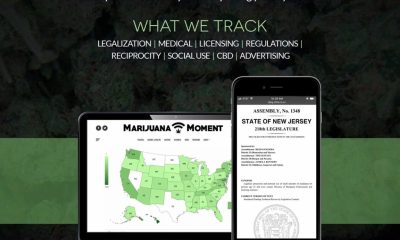

DOJ Asks Federal Court To Deny Doctors’ Lawsuit Over Marijuana Rescheduling Hearing To Avoid ‘Undue Delay’
-


What Federally Illegal Drug Has Created Almost $10 Billion in Sales Tax Revenue for States in the Last 40 Months?
-


Three Wise Men Give Marijuana Strain Gift Suggestions
-


Tasmanian Hemp Assoc Bids Goodbye To Australian Hemp Council
-


Teen Marijuana Use Continues To Drop With Legalization
Cannabis News
HHC vs. Delta 9: Differences & Similarities
Published
17 hours agoon
December 20, 2024By
admin

Cannabis has so many compounds, and two that have been making the rounds lately are HHC and Delta 9 THC. They’re not the same thing, even though they’re both cannabinoids that interact with the body’s endocannabinoid system. Some people want a mild, steady experience, while others might be looking for something more intense. Understanding these two can help you figure out what’s right for you.
What Is HHC?
HHC, short for hexahydrocannabinol, is a hydrogenated version of THC. It’s not something you’d find naturally in large amounts in cannabis plants. Instead, it’s made through a process that adds hydrogen molecules to THC. The result? A more stable compound that’s less prone to breaking down when exposed to heat or UV light.
How HHC Is Made
Think of it like a science experiment. HHC is usually created in a lab by taking Delta 9 or Delta 8 THC and using hydrogenation—basically, combining it with hydrogen under pressure and in the presence of a catalyst. This process changes its structure while keeping its effects somewhat similar to THC.
Common Uses and Effects of HHC
People who use HHC say it’s somewhere between Delta 8 and Delta 9 in terms of effects. It’s often described as relaxing but without being overly sedative. You might feel a light buzz, reduced stress, or mild euphoria. Some even claim it helps with discomfort or improving sleep, but solid research is still catching up. Since it’s less potent than Delta 9, it’s often favored by those who want a manageable experience without the strong psychoactive punch.
If you’re interested in trying HHC and Delta 9 for yourself, check out their wide range of products at trycandycloud.com. They’ve got everything from gummies to disposable vapes, all crafted for a smooth experience.
What Is Delta 9 THC?
Delta 9 THC is the main psychoactive compound in cannabis. It’s the reason you feel “high” when you use weed. Chemically speaking, Delta 9 has a double bond in its ninth carbon chain, which plays a big role in how it interacts with your brain.
Natural Occurrence in Cannabis
This one is straightforward: Delta 9 is found in high concentrations in marijuana plants. It’s what most people think of when they hear “THC.” Unlike HHC, there’s no need for a lab process—it’s already there. Hemp plants, however, contain much lower levels of Delta 9 THC, which is why it’s primarily extracted from marijuana.
Common Uses and Effects of Delta 9 THC
The effects of Delta 9 are well-documented. Depending on the dose, you might feel euphoria, increased appetite, or deep relaxation. For medical users, it’s often used to manage chronic pain, nausea, and other conditions. It’s also been studied for its potential benefits in anxiety relief, though higher doses might have the opposite effect, causing paranoia. Delta 9 THC is versatile, but it’s not without its risks, particularly for new users or those sensitive to its psychoactive effects.
Key Differences Between HHC and Delta 9 THC
Chemical Structure and Composition
The main difference is in their structure. Delta 9 THC has that iconic double bond, while HHC’s hydrogenation makes it more stable. This difference might not mean much to the average person, but it’s why HHC is less likely to degrade over time.
Potency Levels
Delta 9 THC is generally more potent. HHC might require a higher dose to get a comparable effect, but some people prefer its lighter touch. Potency differences can also depend on the method of consumption, with edibles typically providing a stronger, longer-lasting effect compared to vaping or smoking.
Duration of Effects
Both last a few hours, but some users report that HHC’s effects fade more gradually. Delta 9, on the other hand, can have a sharper comedown. HHC’s gradual fade makes it appealing for those who want a smooth end to their experience.
Benefits and Drawbacks of HHC and Delta 9 THC
HHC: Pros and Cons
Pros:
- More stable, so it lasts longer on the shelf.
- Effects are milder, making it less overwhelming for beginners.
- Can be a functional option for daytime use.
Cons:
- Limited research, so we don’t know its full impact yet.
- Availability can be hit or miss depending on where you live.
- Legal gray area in many regions.
Delta 9 THC: Pros and Cons
Pros:
- Well-studied with established medical uses.
- Widely available in areas where cannabis is legal.
- Stronger effects make it ideal for experienced users or those with high tolerance.
Cons:
- Higher chance of side effects like anxiety.
- More likely to show up on drug tests.
- Shorter shelf life compared to HHC.
Frequently Asked Questions (FAQ)
Q. Is HHC safer than Delta 9 THC?
Not enough research exists to say definitively, but HHC’s milder effects might make it feel safer to some users.
Q. Will HHC or Delta 9 THC show up on a drug test?
Yes, both can potentially show up on a drug test, so use with caution if that’s a concern.
Q. Which one is better for recreational use?
That depends on your preferences. HHC is great for a mellow time, while Delta 9 is better if you’re looking for something more intense.
HHC vs. Delta 9: Choosing the Right One for You
The choice comes down to what you’re after. If you want a milder, more laid-back experience, HHC might be a good option. On the other hand, if you’re looking for something stronger or need it for medical reasons, Delta 9 is the way to go. It also depends on what’s legal and available where you are. And always consider your tolerance levels and experience before diving in. If you’re unsure, consult with a knowledgeable dispensary staff.
Resources:
Cannabis News
What Federally Illegal Drug Has Created Almost $10 Billion in Sales Tax Revenue for States in the Last 40 Months?
Published
23 hours agoon
December 20, 2024By
admin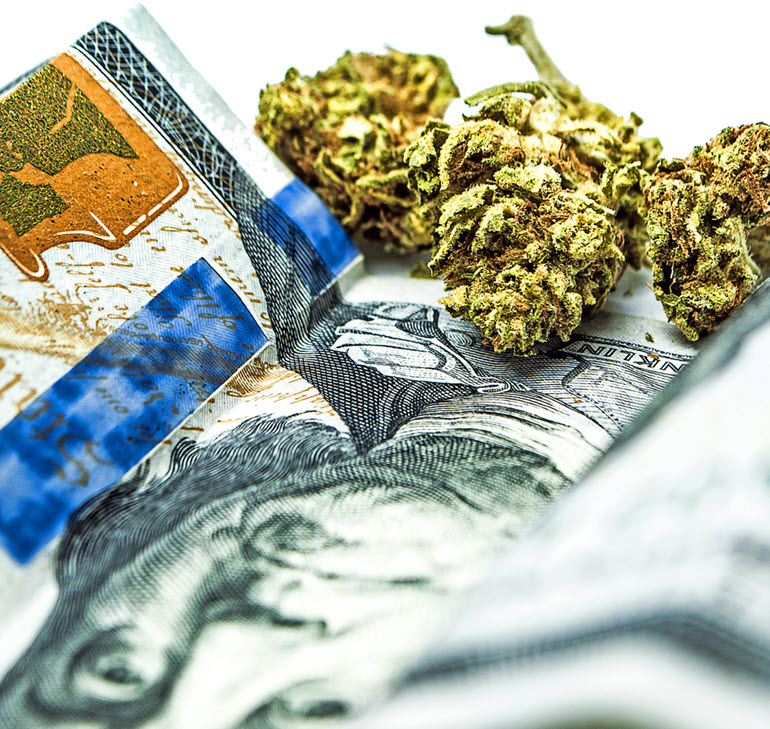
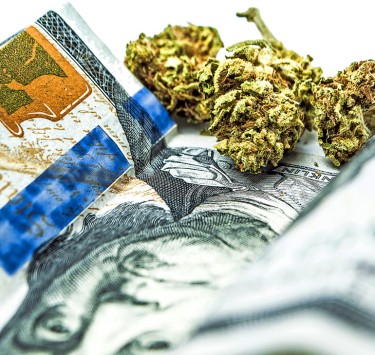
In a significant development for the burgeoning cannabis industry, the U.S. Census Bureau has reported that states across the nation have collectively amassed over **$9.7 billion** in tax revenue from marijuana sales since mid-2021. This figure underscores the economic impact of legalized cannabis and highlights the growing acceptance of marijuana as both a recreational and medicinal substance in various states. As more states move toward legalization, the financial implications both positive and negative are becoming increasingly evident.
The Landscape of Cannabis Legalization
The journey toward cannabis legalization in the United States has been long and complex. Initially criminalized in the early 20th century, cannabis began to regain acceptance in the late 20th century, particularly for medical use. The first state to legalize medical marijuana was California in 1996, setting a precedent that many states would follow.
By 2012, Colorado and Washington became the first states to legalize recreational cannabis, paving the way for a wave of legalization efforts across the country. As of now, more than 20 states have legalized recreational marijuana, while over 30 states allow medical use. This shift reflects changing public attitudes toward cannabis and recognition of its potential benefits.
Economic Implications of Legalization
The legalization of cannabis has not only transformed social norms but has also created a substantial economic impact. States that have embraced legalization have seen significant increases in tax revenue, job creation, and investment opportunities.
According to the latest Census Bureau report, states like California, Colorado, Illinois, and Michigan have emerged as leaders in cannabis tax revenue generation. These states have implemented various tax structures on marijuana sales, including excise taxes, sales taxes, and local taxes. The revenue generated is often earmarked for essential public services such as education, healthcare, infrastructure improvements, and drug rehabilitation programs.
Breakdown of Tax Revenue by State
As the largest legal cannabis market in the United States, California has been at the forefront of marijuana tax revenue generation. Since mid-2021, California has contributed approximately $2.5 billion to state coffers from cannabis taxes. This revenue is derived from both recreational and medical marijuana sales.
California’s tax structure includes a 15% excise tax on retail sales, along with local taxes that can vary significantly by city and county. The state has allocated a portion of these funds to various programs aimed at addressing issues related to drug abuse and public health.
Colorado was one of the pioneers in cannabis legalization and continues to serve as a model for other states. Since mid-2021, Colorado has generated around $1.8 billion in tax revenue from marijuana sales. The state imposes a 15% excise tax on wholesale marijuana transactions and a 2.9% sales tax on retail sales.
The revenue generated from cannabis taxes has been instrumental in funding education initiatives through the Public School Fund, as well as supporting mental health programs and substance abuse treatment services.
Illinois has seen remarkable growth in its cannabis market since legalizing recreational use in January 2020. In just two years, Illinois has collected approximately $1 billion in tax revenue from marijuana sales. The state imposes a tiered excise tax based on the potency of the product, ranging from 10% to 25%.
The funds collected are allocated to various initiatives, including community reinvestment programs aimed at addressing social equity issues related to past drug enforcement practices.
Michigan’s cannabis market has also flourished since legalization. Since mid-2021, Michigan has generated about $700 million in tax revenue from marijuana sales. The state’s tax structure includes a 10% excise tax on recreational marijuana and a 6% sales tax.
The revenue is utilized for various purposes, including education funding and support for local governments impacted by legalization.
Broader Economic Impact
The legalization of cannabis has led to significant job creation across various sectors. According to industry reports, the legal cannabis market supports hundreds of thousands of jobs nationwide—from cultivation and processing to retail and distribution. As more states legalize marijuana, this trend is expected to continue.
With the growth of the legal cannabis industry comes increased investment opportunities. Entrepreneurs are entering the market at an unprecedented rate, leading to innovations in product development, marketing strategies, and distribution channels. This influx of investment not only benefits individual businesses but also stimulates local economies.
Social Equity Considerations
While the financial benefits of cannabis legalization are clear, it is essential to address social equity issues that arise alongside this new industry. Many states have recognized that communities disproportionately affected by past drug enforcement policies should benefit from legalization efforts.
States like Illinois have implemented community reinvestment programs that allocate a portion of cannabis tax revenues to support communities impacted by previous drug laws. These funds can be used for education initiatives, job training programs, and mental health services—aiming to rectify historical injustices associated with cannabis prohibition.
In addition to financial support for communities affected by past policies, some states are also working to create equitable licensing opportunities for individuals from those communities. By prioritizing applications from minority-owned businesses or those directly impacted by previous drug laws, states can foster a more inclusive cannabis industry.
Challenges Ahead
Despite the significant progress made through legalization efforts, challenges remain on both state and federal levels.
Federal Legalization Uncertainty
One major hurdle is the ongoing conflict between state and federal laws regarding cannabis. While many states have legalized marijuana for recreational or medical use, it remains classified as a Schedule I substance under federal law. This discrepancy creates complications for businesses operating legally at the state level but facing potential federal prosecution.
Efforts toward federal legalization or decriminalization have gained traction recently; however, progress remains slow due to political divisions and differing opinions on drug policy reform.
Regulatory Hurdles
As more states enter the legal cannabis market, regulatory frameworks must evolve to ensure consumer safety while promoting fair competition among businesses. States face challenges related to product testing standards, labeling requirements, advertising restrictions, and taxation policies that can impact market dynamics.
Conclusion
The U.S. Census Bureau reports that states have collected over $9.7 billion in marijuana tax revenue since mid-2021, highlighting the significant economic impact of cannabis legalization. As public acceptance grows, more states are likely to pursue legalization. Despite ongoing challenges, including federal regulations and social equity issues, legalized cannabis is poised to remain a vital part of state economies. Collaboration among government officials, business leaders, and community advocates will be essential for fostering an equitable and sustainable cannabis industry. This evolving landscape not only presents economic growth opportunities but also addresses historical injustices tied to drug policy enforcement, shaping the future of cannabis legislation in the U.S.
WHAT STATES HAVE THE HIGHEST WEED TAXES? READ ON…
Cannabis News
Oregon Cannabis: State of the State (2024)
Published
2 days agoon
December 19, 2024By
admin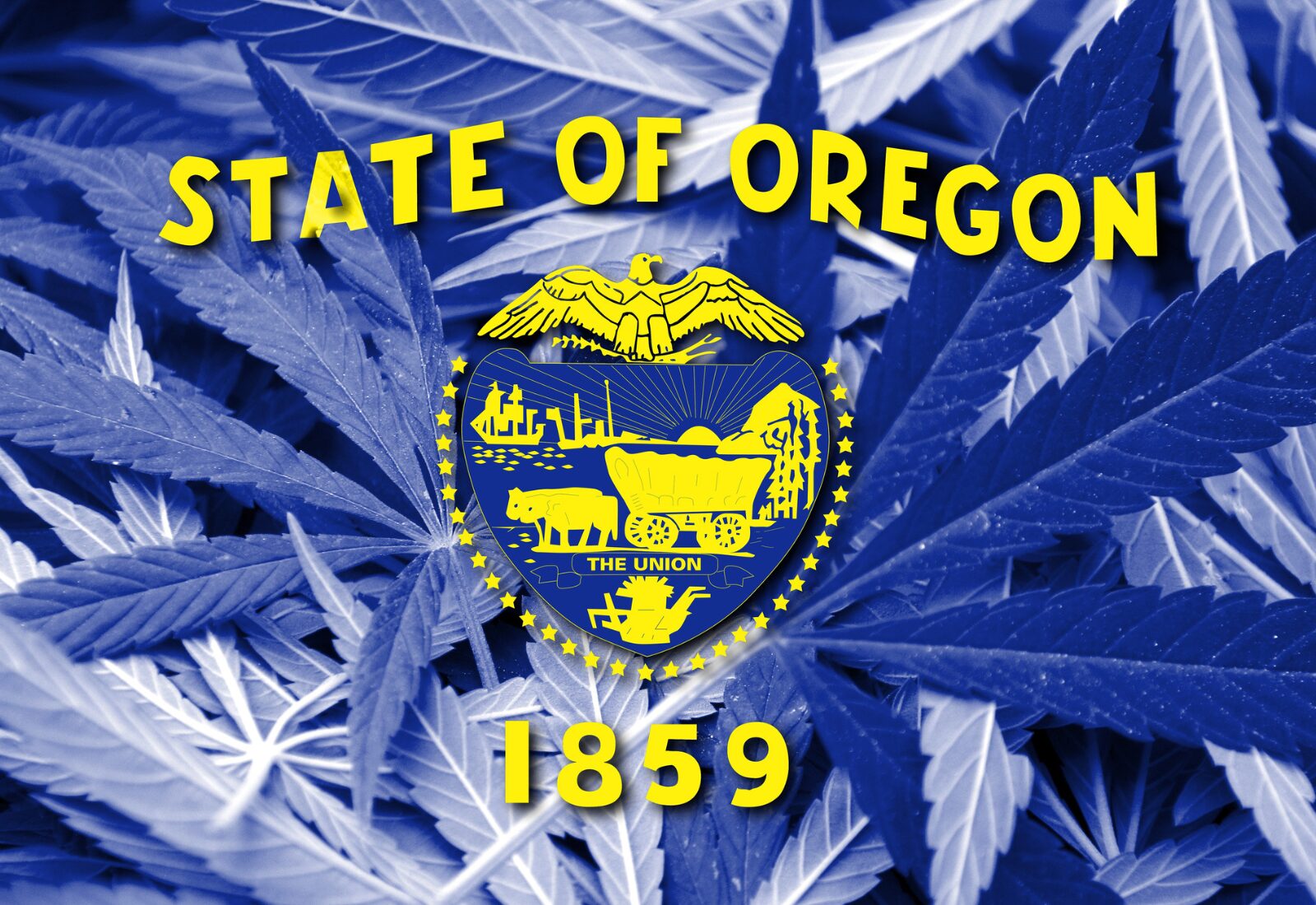
Welcome the ninth annual “State of the State” post on Oregon cannabis. I feel like an old man. As compared to 2023, things this year were pretty mellow. That’s not to say, however, that we don’t have trends, intrigues, controversies, mysteries, etc., worth writing about. Let’s dive right in.
Sales and market data
According to OLCC data, retail sales between January 1, 2024 and November 30, 2024 clocked in at $881 million. That is remarkably consistent with 2023, where we saw $874 million over the same 11-month span. If things remain steady for the next couple of weeks, Oregon should avoid a third consecutive drop in annual sales.
Prices are also relatively static. The median price per gram in the extract/concentrate category was $15.83/gram in November, floating from $15.36 to $16.00 throughout the year. For “usable marijuana”, which includes dried flowers and leaves, prices fluctuated from $3.89/gram to $3.57/gram last month.
October saw Oregon’s largest METRC harvest, ever, with 5,733,288 pounds reported. I’m sure the illicit market had a bumper year too; weather is the same for everyone and the enforcement paradigm is static. Anyway, the October numbers equal 900,000 more pounds than the same month in 2023. Consumers may benefit, but that can’t be great for pricing.
As far as what people are actually buying at OLCC shops:
- 2% of purchases are for usable marijuana
- 25% are extracts/concentrates
- 7% are edibles/tinctures
- 10% are “inhalable product with non-cannabis additives”
- 4% is “other”; and
- 6% is industrial hemp commodity products.
Yes, that equals 100%. In 2023, I noted a “years-long trend of usable marijuana sales decreasing per capital in favor of other categories.” The trend continued in 2024 (usable marijuana sales dropped another 2.5% year over year). Last year, I wrote that “my impression is that near-term growth may be limited to select SKUs and product categories.” Still feel that way.
Licenses and licensing
Our years-long OLCC licensing moratorium was made permanent in 2024 (more on that below). Overall, license numbers declined marginally across the board. Here’s a table showing current numbers as compared to 2023, which I wrote “was the first year I saw license numbers fall since the 2016 roll-out of the adult use program.”
| 2024 | 2023 | Change | |
| Producers | 1,375 | 1,389 | -14 |
| Processors | 288 | 312 | -24 |
| Wholesalers | 257 | 269 | -12 |
| Retailers | 789 | 818 | -29 |
| Labs | 13 | 15 | -2 |
| Research | 1 | 1 | none |
It’s good to see numbers dropping, I suppose. Most would agree that we have too many licenses across all categories– except perhaps for labs and research. Expect numbers to continue on a modest downward trend in 2025.
Industry limping along
In the last few State of the State posts, I’ve talked about businesses struggling. We’re still helping people sell or even walk away from things we helped them buy not long ago. In 2023, the big liquidation story was the Chalice receivership. In 2024, insolvency and cannabis receivership actions are still a regular occurrence. The largest of 2024 was the Tumalo receivership, which we structured here in the office, and which remains ongoing. We’re working on a few others as well: some are voluntary, and others, well, not so much.
Consolidation is still a fact of life in Oregon cannabis, with larger operators opportunistically picking up assets, mostly at retail. A majority of buy/sell transactions, however, seem to involve new market entrants and naked licenses. In these deals, a seller will relinquish its rights to an OLCC license in favor of a replacement license for the buyer— sometimes at the same location and sometimes in a new spot. Pricing on these transactions, which are styled as asset purchase agreements, has remained steady in each license class. That said, pricing can be negotiable.
Most of the bigger players are still around. A couple of people have asked me how that could be the case with a chain like La Mota, whose legal issues metastasized into a statewide controversy, and resulted in unwelcome tax compliance rules for OLCC retailers. The answer is simple: La Mota probably reached a deal on payment plan with the Department of Revenue. Elsewhere, we haven’t seen anything to convince us, one way or the other, that OLCC is making an effort to treat small businesses the same as the larger operators— a problem area we highlighted in 2023. That said, let’s see what happens with the labs.
OLCC chasing testing labs on THC inflation
On September 25th, OLCC sent enforcement notices to seven testing laboratories. I explained at the time that OLCC had:
Propos[ed] license cancellation in some cases and suspension or fines in others. The notices center on alleged THC inflation, and extend back to instances identified in 2023. We only have eleven labs in Oregon accredited to do this mandatory work, so OLCC chasing seven of them is a big deal.
This saga is still ongoing, and none of these cases are resolved to my knowledge. For considered and lawyerly reasons, I’ll reserve further comment on this one, beyond all that I’ve already said.
New OLCC rules and legislative changes
Various rules took effect in 2024, due to legislative changes this spring and an initiative vote in the fall. Here are the four biggest developments for me, in chronological order:
Licensing Moratorium
Oregon finally made its licensing moratorium permanent, when Governor Kotek signed House Bill 4121 on March 20, 2024. This means the only way to acquire a cannabis license in Oregon is to find someone willing to sell. That will likely be the case forever, based on unreachable “new license triggers” in HB 4121, and the fact that the legislature won’t reverse this new law.
Hemp Vendor License Requirement
This one took effect July 1. At that time, I wrote that the rule was “very broad and likely to catch people off guard.” That proved to be the case in my experience, including with respect to OLCC— I ended up writing them on September 30 after stumbling across incorrect FAQs on the topic. My guess is that a large number of Oregon businesses are still unaware of the license requirement, and therefore not compliant, and that it doesn’t really matter because enforcement is sparse or nonexistent.
Labor Peace Agreements
This one has been a scramble, with many licensees having to find a way to comply on short notice. The short story is that due to Ballot Measure 119, which passed in November, all OLCC licensed retailers, processors and labs must provide a signed labor peace agreement (LPA) with a bona fide labor organization, to renew or apply for an OLCC license. I still believe BM 119 is legally problematic, but someone needs to challenge it to obviate the LPA requirement.
Presumptive Hemp Testing Rules
The Oregon Department of Agriculture (ODA) issued a temporary administrative order following on HB 4121, which defines presumptive marijuana under its testing rules, outlines procedures for marijuana disposal, and outlines violations of ODA hemp licensure more generally.
__
We can expect to see more changes, as always, in 2025. OLCC is currently in rulemaking to implement HB 4121, to start. The 2025 legislative session next year is also a long one, lasting from January to June. I’ll write my usual session preview sometime in January, lest this post become extremely long. For now, the Cannabis Industry Alliance of Oregon (CIAO) has listed out is legislative priorities here.
Odds and ends
- 2024 must have been a welcome reprieve for OLCC, which remained mostly out of the spotlight after a trying year in 2023.
- Not much is going on with ODA and the hemp industry, beyond what I mentioned above.
- Shout-out to CIAO, which was organized and effective in its first full year as Oregon’s consolidated, cannabis trade group.
- Local cannabis banking is getting easier all the time. Most recently, we built out a cannabis banking program for Central Willamette Credit Union, the newest Oregon service provider.
- I’m still pessimistic about a federal cannabis banking bill, but I’m hopeful for federal rescheduling. A move for marijuana to Schedule III would do away with punitive tax code provision IRC § 280E – hopefully in calendar year 2024. That development would immediately increase margins for Oregon cannabis businesses, across the board.
- Also at the federal level, this was our last year with Earl Blumenauer, Congress’s greatest ever cannabis advocate.
Oregon cannabis: that’s a wrap
Let me know in the comments if you think I missed anything worth mentioning, or shoot me an email. There is always something. In the meantime, here’s hoping for smooth sailing for Oregon cannabis in 2025.
For previous posts in this series, check out the following:

HHC vs. Delta 9: Differences & Similarities
DOJ Asks Federal Court To Deny Doctors’ Lawsuit Over Marijuana Rescheduling Hearing To Avoid ‘Undue Delay’

What Federally Illegal Drug Has Created Almost $10 Billion in Sales Tax Revenue for States in the Last 40 Months?

Three Wise Men Give Marijuana Strain Gift Suggestions

Tasmanian Hemp Assoc Bids Goodbye To Australian Hemp Council

Teen Marijuana Use Continues To Drop With Legalization

The Best Cocktails To Make You Feel Festive

Cannabis predictions for 2025: Low prices, high taxes, and hash

Oregon Cannabis: State of the State (2024)

Are MSOs Just Big Pharma on Steriods?

Distressed Cannabis Business Takeaways – Canna Law Blog™

United States: Alex Malyshev And Melinda Fellner Discuss The Intersection Of Tax And Cannabis In New Video Series – Part VI: Licensing (Video)

What you Need to Know

Drug Testing for Marijuana – The Joint Blog

NCIA Write About Their Equity Scholarship Program

It has been a wild news week – here’s how CBD and weed can help you relax

Cannabis, alcohol firm SNDL loses CA$372.4 million in 2022

A new April 20 cannabis contest includes a $40,000 purse

Your Go-To Source for Cannabis Logos and Designs

UArizona launches online cannabis compliance online course
Trending
-

 Cannabis News2 years ago
Cannabis News2 years agoDistressed Cannabis Business Takeaways – Canna Law Blog™
-

 One-Hit Wonders2 years ago
One-Hit Wonders2 years agoUnited States: Alex Malyshev And Melinda Fellner Discuss The Intersection Of Tax And Cannabis In New Video Series – Part VI: Licensing (Video)
-

 Cannabis 1012 years ago
Cannabis 1012 years agoWhat you Need to Know
-

 drug testing1 year ago
drug testing1 year agoDrug Testing for Marijuana – The Joint Blog
-

 Education2 years ago
Education2 years agoNCIA Write About Their Equity Scholarship Program
-

 Cannabis2 years ago
Cannabis2 years agoIt has been a wild news week – here’s how CBD and weed can help you relax
-

 Marijuana Business Daily2 years ago
Marijuana Business Daily2 years agoCannabis, alcohol firm SNDL loses CA$372.4 million in 2022
-

 California2 years ago
California2 years agoA new April 20 cannabis contest includes a $40,000 purse





